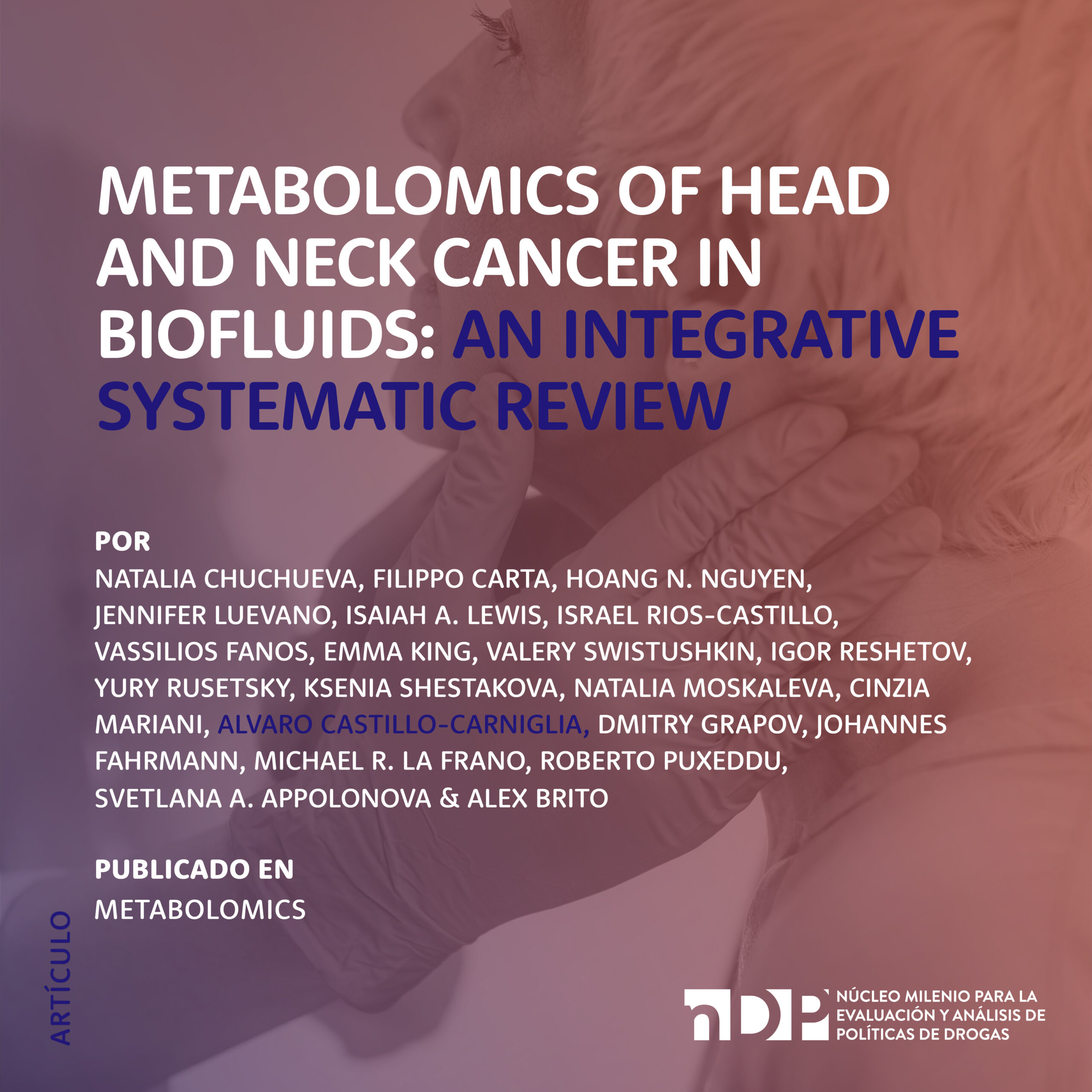El director de nDP, Álvaro Castillo-Carniglia, participó en el desarrollo del estudio titulado «Metabolomics of head and neck cancer in biofluids: an integrative systematic review», en colaboración con Natalia Chuchueva, Filippo Carta, Hoang N. Nguyen, Jennifer Luevano, Isaiah A. Lewis, Israel Rios-Castillo, Vassilios Fanos, Emma King, Valery Swistushkin, Igor Reshetov, Yury Rusetsky, Ksenia Shestakova, Natalia Moskaleva, Cinzia Mariani, Dmitry Grapov, Johannes Fahrmann, Michael R. La Frano, Roberto Puxeddu, Svetlana A. Appolonova y Alex Brito. Este estudio fue publicado en la revista Metabolomics.
ABSTRACT
Introduction: Head and neck cancer (HNC) is the fifth most common cancer globally. Diagnosis at early stages are critical to reduce mortality and improve functional and esthetic outcomes associated with HNC. Metabolomics is a promising approach for discovery of biomarkers and metabolic pathways for risk assessment and early detection of HNC.
Objectives: To summarize and consolidate the available evidence on metabolomics and HNC in plasma/serum, saliva, and urine.
Methods: A systematic search of experimental research was executed using PubMed and Web of Science. Available data on areas under the curve was extracted. Metabolic pathway enrichment analysis were performed to identify metabolic pathways altered in HNC. Fifty-four studies were eligible for data extraction (33 performed in plasma/serum, 15 in saliva and 6 in urine).
Results: Metabolites with high discriminatory performance for detection of HNC included single metabolites and combination panels of several lysoPCs, pyroglutamate, glutamic acid, glucose, tartronic acid, arachidonic acid, norvaline, linoleic acid, propionate, acetone, acetate, choline, glutamate and others. The glucose-alanine cycle and the urea cycle were the most altered pathways in HNC, among other pathways (i.e. gluconeogenesis, glycine and serine metabolism, alanine metabolism, etc.). Specific metabolites that can potentially serve as complementary less- or non-invasive biomarkers, as well as metabolic pathways integrating the data from the available studies, are presented.
Conclusion: The present work highlights utility of metabolite-based biomarkers for risk assessment, early detection, and prognostication of HNC, as well as facilitates incorporation of available metabolomics studies into multi-omics data integration and big data analytics for personalized health.
Keywords: Big data; Biomarkers; Head and neck cancer; Malignancies; Metabolites; Metabolome; Metabolomics; Omics; Oncology; Personalized health; Squamous cell carcinoma.
Accede al artículo completo aquí.


